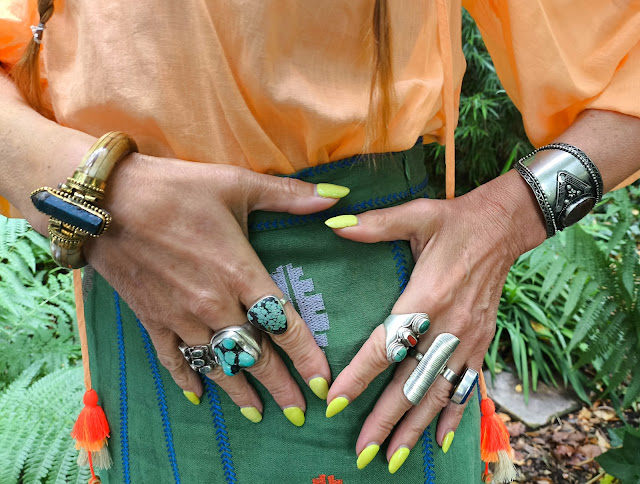.png)
After a week of wandering around in state of befuddlement, I'm happy to say that the Glastonbury brain fog has dissipated and we're back to firing on all cylinders.

Whilst still recovering, on Saturday we decided to pop over and surprise Liz who, along with other members of Walsall Society of Artists, were hosting a private viewing of their annual Summer show. After a 40 minute journey we pulled into the car park at Himley Hall in Worcestershire only to realise that we'd got the venue wrong and the exhibition was actually at Weston Park in the county of Staffordshire. Oh dear! After another 45 minutes we arrived at our destination albeit fashionably late.
 |
| Liz, Al & Jon |
How gorgeous is Liz's artwork featuring vintage ceramics?
Check out more of Liz's art
HERE!
Other than that longer than expected journey it's been a pretty chilled out week, the van still hasn't been unpacked but I've managed to read four books, I've swum three miles ( it would have been four but I seemed to have spent most of today's session chatting), we've been charity shopping, had two Spoons breakfasts and topped up my tan as the great British heatwave continues.
Having finished Yellowstone we moved on to the prequel, 1883, which we loved. Just like in Yellowstone, there's some incredible female characters and their costumes are bloody gorgeous.
Inspired by Noemi, played by beautiful newcomer Gratiela Brancusi, I've been wearing headscarves which not only stop my scalp from sizzling in the sunshine but also so that I can keep my hair in braids whilst hiding the fuzziness I get from wearing a swimming cap.

The earrings are another pair my friend Caroline brought back for me from Delhi.
The only thing vintage about my outfit is my Indian silk screen printed headscarf (and me!) The embroidered linen skirt was orignally Zara but bought secondhand via Vinted and the orange cotton blouse was from Monsoon.
The Twister nails are still going strong three weeks later.
Here's what I wore today....
Another vintage silk scarf from my collection, a River Island block printed cotton jacket (£2, secondhand find!) and a vintage India Imports of Rhode Island maxi dress I've had since 2018.
We've been to the cinema this afternoon in the cinema to see
The Ballard of Ellis Island, a touchingly bittersweet comedy co-written and starring comedian Tim Key about an ecentric lottery winner who tries to reunite his favourite folk band by attempting to host a gig on a remote Welsh island. Richard Curtis reckons it's one of the best British movies of all time. Many thanks to our mate Nigel at the swimming pool who recommended it. Catch it if you can - if you don't love it as much as we did there's no hope for you!

I'm meeting Nikki in Birmingham for a day of culture and curry. Sundress, sun cream and sandals at the ready, it's going to be a scorcher!



.png)



















